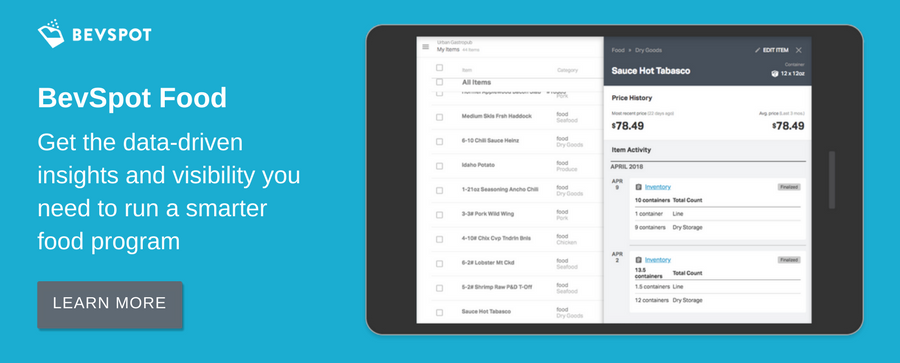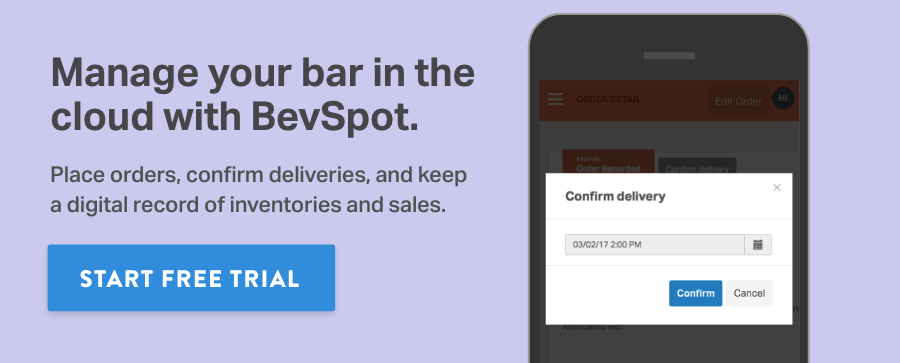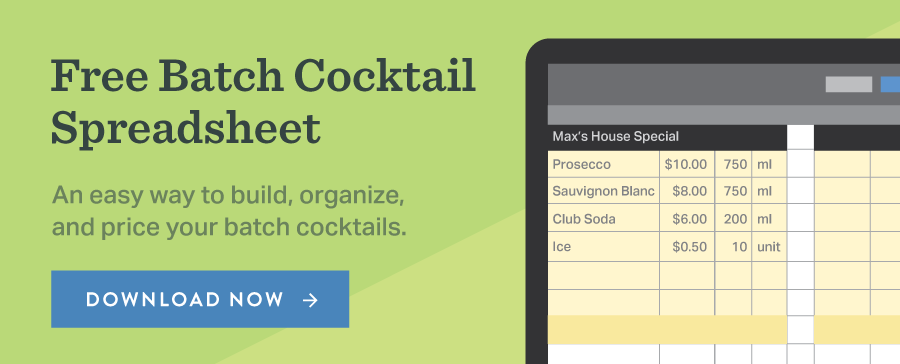Getting An Arcade Game for Your Bar Walkthrough
Get your retro game on.
Arcade games have been a fixture at bars, restaurants, and similar establishments since they were first invented in the late 1970’s. Today, just as decades ago, they draw guests in and help to keep children or bored, waiting adults occupied.
Americans are prone to nostalgia, and 80’s nostalgia has been rampant lately. (Stranger Things, anyone?) Now, a lot of the old titles are in demand—surely you remember Pac Man, Galaga, Space Invaders, and Dig Dug? New hybrid arcade bars have been setting up shop in various cities, offering the chance for gaming-while-imbibing, and sometimes offering food menus as well. Ground Kontrol in Portland, OR is an excellent example of a successful bar/arcade.
Not everyone is going to open up a full-fledged arcade, but many establishments do benefit from having games on the premises. I can speak personally to this, because my boyfriend, Grant Garvin, is a game collector/restorer and places games in local establishments through 313 Heavy Industries. He and two other local collectors also run pop-up arcade events called Arcade Revival.
“I think there are multiple reasons for the resurgence; a lot of it is nostalgia for a type of competition that is impossible to find outside of the arcade era. People are looking to capture these feelings they had that no other form of entertainment can replicate, even if they were too young to have experienced them firsthand during that time.” – Grant Garvin
Before you decide to rush onto Craigslist or eBay and pick up an old game to proudly boast in your establishment, there are a few considerations that you must take into account:
How do you grab your own power-ups?
If you’re looking to own your own game, the market for vintage cabinets and pins has gotten hotter and more competitive with each year that goes by. Just as with cars, you can often find old games for cheap, but their price tag will reflect the kind of condition they are in and how much work is required to bring them back to what they looked like and how they ran their glory days (or as close to it as possible).
Necessary parts can be hard-to-come-by and expensive, and knowing which parts are needed requires technical expertise. If you can find the title you want, buying it in already-working-order is often the way to go, because the cost to fix it up will probably bring you close to that higher number anyway.
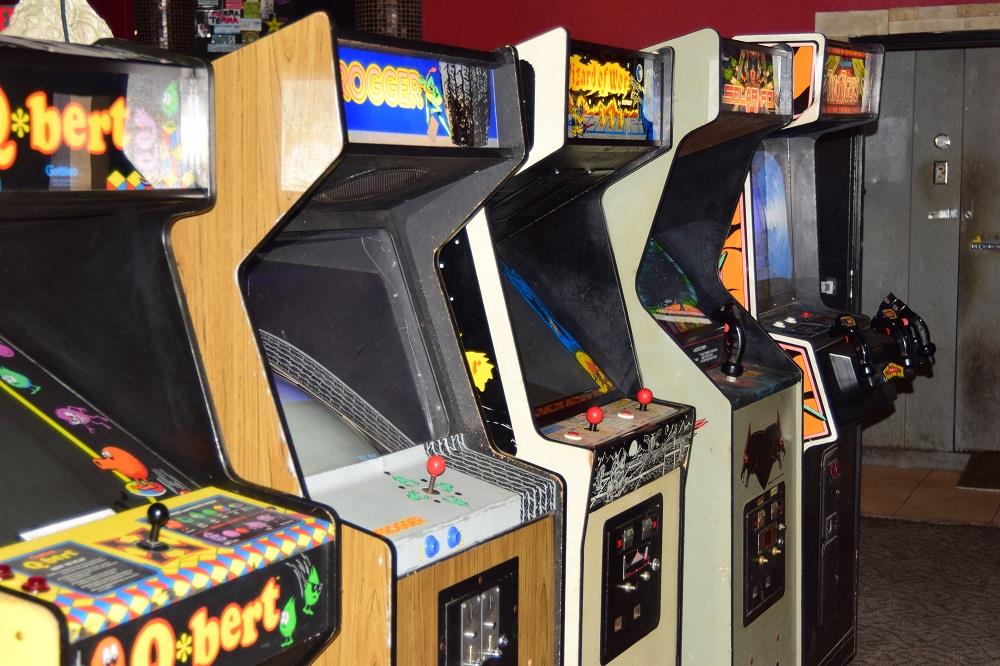
Do you play solo or go co-op?
Things have changed a lot since the 80’s and 90’s, and the technology you will encounter in these old games has become almost completely obsolete. Commercially, LCD screens have replaced CRT monitors, which are barely manufactured anymore. Unless you are someone like Grant who enjoys learning about the technical aspects of old game repair, you will need to have a tech on retainer who can maintain the games, which can be pricey.
The alternative is to effectively rent a game out from a company or individual who owns and maintains them and will come and fix it when it’s broken, because they are collecting quarters from the game itself. Grant notes that yearly maintenance can average $400 per video game if you’re paying a technician, but in the case of pinball machines, this number can be dramatically higher.
How do you avoid game permadeath?
Games can be unreliable—especially old ones. Some old games are finicky or fragile and cannot be left on for very long periods of time, and with others, turning them off causes the high scores to disappear, which can annoy some customers. The most common issue we see, however, is jams or problems with the coin mechanisms—often caused by customers themselves who have tried to put slugs or tokens inside instead of quarters.
Pinball presents even more possibilities for problems, because it has so many moving physical components in addition to the electronic ones; flippers often get stuck, the insides must be regularly cleaned, and so on. In certain demographics, having a great game or two will absolutely draw folks into your establishment. You just need to be prepared to deal with the occasional malfunction and resulting customer complaints. If your tech can’t get there right away, that can be frustrating as well.
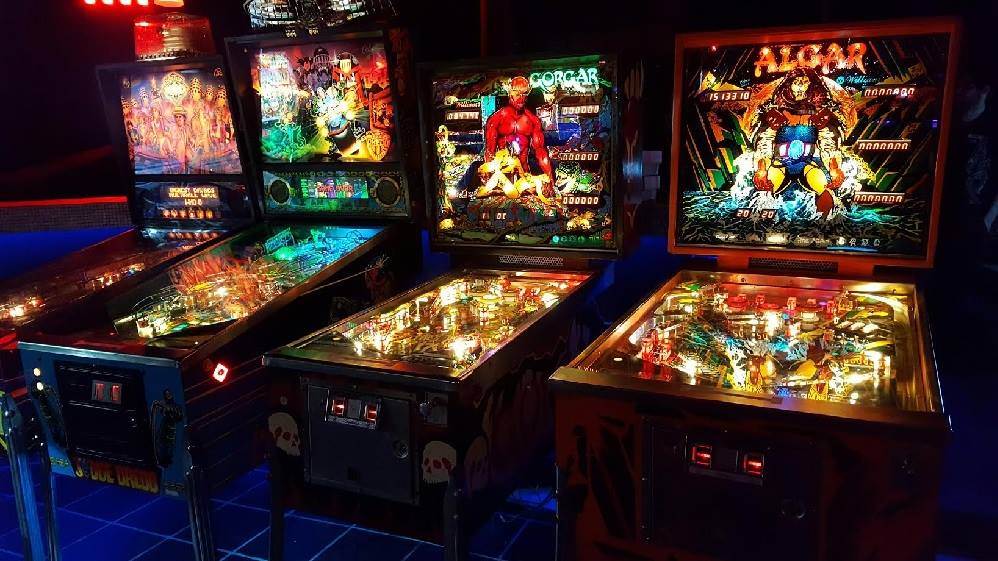
How do you beat the “overhead” minigame?
Every state is different in how it taxes games. In Rhode Island, for example, a venue must pay a specific monthly fee per machine after a certain number.
There is also some debate over quarters-vs-free play; most games won’t make a fortune in quarters, and, unless you have a change machine, it can be disruptive to have customers repeatedly asking for them from you and your staff. You may be better off just using the machine as a way to draw people in and then pay the operator a separate rental fee.
Ready player one?
If you have taken all of these considerations into account and still wish to rent a game for your establishment, Grant recommends going onto a search engine and looking up your local arcade or pinball collectors organization; they should be able to put you in touch with the right people to keep it properly restored and maintained, because they take the hobby seriously.
You probably already know whether a vintage game would suit the decor and vibe of your bar or restaurant and its clientele. You may have also loved such games in your youth, in which case it can be a big point of pride to have one on display.
If you can make the finances and logistics of game ownership or rental work, the cultural moment is ripe right now to show off your appreciation for retro arcades. Having an old cabinet or pinball in great working order links the space you’ve created back to that golden arcade era and subsequently taps into that nostalgia for any who enter the establishment. If it’s something you want and you can make it work, go for it!
Schedule 15mins to chat with a product specialist
Start a FREE Trial Today! BevSpot offers full product education and account setup for all customers! No card Information needed!
How to Make the Most of your United States Bartender’s Guild Affiliation
United States Bartender’s Guild (USBG)
Previously, we introduced the United States Bartender’s Guild (USBG) and the resources it offers to bartenders across the U.S. and internationally. Now, two of BevSpot’s writers are taking a closer look at USBG chapters in Oregon and Rhode Island to get a better idea of how local chapters have made the most of their USBG affiliation and what types of solutions they have found for the individual challenges that have confronted them.
Amanda lives in Providence and runs into chapter members frequently around town, and Loren is a recent transplant to Boston from Portland, where he was a member of the Oregon chapter and got to know its leadership well. These two states could not be more different: they are on opposite coasts of the country, Rhode Island is tiny by comparison, while Oregon has been a food and beverage hotspot in the news for awhile.
But, we found some surprising common threads of thought in terms of how to make the most of the USBG, as well as some diverse ideas about innovation and branching out in new directions.
Mise En Place (The Setup)
A little background about the USBG chapters and leaders our writers spoke with:
Loren: Nathan Gerdes is the recently stepped-down president of the Oregon Bartender’s Guild (OBG), which was founded in 2004 as a small, independent organization of bartenders who wanted to expand awareness of quality cocktail making or “craft bartending” as we refer to it now. The OBG voted to join the USBG in 2010 because of its promise of affordable healthcare for members (which ended up being moot and unnecessary when the Affordable Care Act was implemented—though with recent administration changes this may become a concern again). The Oregon guild has been a standout among West Coast guilds in terms of innovation and commitment to the craft and USBG principles, and about 40 members regularly attend guild events. Nathan is my good friend, a masterful mixologist, and an avid climber. He is my go-to on learning about integrating technology into the service industry from a grassroots level, and I have a big ol’ man crush on him.
Amanda: Jen Davis just took over a few months ago as president of the Rhode Island Bartender’s Guild (RIBG) which, as I mentioned in a recent post, was founded in 2011 by Frank Martucci and Michael Lester, who heard about the organization from friends working in the New York scene. They did so because Providence bartenders already wanted to “raise the bar of public perception and expand their craft into a real career” as well as to “network, connect, learn, and give back to the community,” in Lester’s words. Providence hosted the first ever United States Bartender’s Guild regional meeting in 2011, and Martucci went on to join the national board and helped put Rhode Island on the map. Roughly 15-20 members show up at the monthly meetings, although we should note that for both of these guilds, actual membership numbers are much higher—it’s just that not all people can make it to events regularly.
The Conversation
Which types of events are typically held?
Loren: The OBG regularly hosts two events every month—a monthly meeting and a local social; however, it also partners with multiple brands to host other special events on a less regular frequency. For instance, the event formerly known as Portland Cocktail Week, Bar Institute—a local event turned national run by the USBG. More precisely, Nathan told me, “I would say on average we have three to four member engagements every month, so around 40 per year. Most of them are educational-based, but all of them are fun.” I can also speak to the truth of this, since I was an active member for the past 2 years before I moved to Boston. We had a Field Day to celebrate our members back in the summer that had a handful of sponsors, slip n’ slide kickball, and a lot of killer drinks and fun. The OBG really tries to create events that aren’t just getting together at a bar and celebrating excellent product and people (which is totally awesome), but you have to mix it up to keep people interested.
Amanda: Rhode Island hosts really fun and exciting meetups, which are very popular and help to build a strong sense of community. During her tenure, Jen also wants to bring in more of the educational element and to maximize those resources: “I’ve definitely wanted to focus more on the educational aspects, since I feel they’re the most valuable thing the United States Bartender’s Guild has to offer. You can go out any night of the week!” In March, the guild hosted a rum event with Plantation about the history of Tiki in Providence, and is also working on a bitters class and local RI beer tour in April or May to check out all the breweries. They also held a belated “Friendsgiving” party and 4th Annual Edinburgh Gin Cocktail Competition at the Grange this past January, which was a huge hit.
How is leadership key in helping to improve and grow a guild, and what are some changes these leaders have focused upon?
Loren: For Nathan: “inclusiveness, understanding, and empathy” are key points to what he sees as good leadership. Because I served as the Charity and Aid Director in the OBG, I can speak directly to Nathan and the rest of the council’s aptitude for listening to an increasingly diverse member base and acting when approached with their members’ concerns. Nathan and Nick Nye, the previous vice president and now president, both take matters serious and fun to heart and make it part of what is shared through the OBG. As Nathan explained, “Making cocktails isn’t a bartender’s primary job; making our customers feel welcome is; so making sure our guild practices and fosters that kind of openness and warmth is key to improving ourselves and our industry.”
Amanda: Jen describes herself as having a “born leader” personality and had always wanted to run for a position, but before last year, her schedule didn’t permit it. She says that, “When you’re in a leadership role, your real job is to provide support for people underneath you, and that’s what the real goal for the RI guild is at this point—whether it’s having an educational component or a way to help people get jobs through resume assistance or connecting them with other people after they move to a new city.” She’s also trying to help the state overcome that Rhode Island mentality of “When you’re going 20 minutes away, you pack a lunch”—a deeply ingrained reluctance to travel that we have here, by setting up satellite guilds in Newport and one in conjunction with culinary school Johnson & Wales.
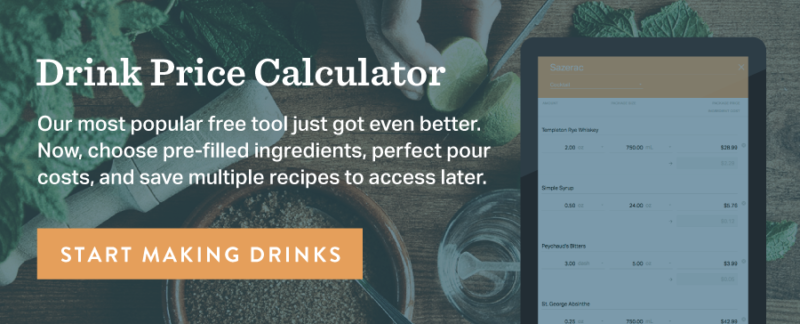
What can bartenders do to be more proactive?
Loren: This is something I’ve actually mentioned to multiple people in every industry, and Nathan echoes me on this: “To simply do it. You want to be more active, you have an idea for an event or activity you want thrown, you are passionate about a particular spirit, cocktail, or technique you want to share—do it!” The way our career culture works these days, you don’t need to hold a title or be appointed to make a name or present yourself. “Our guild was led by ordinary people–regular bartenders. The only difference is people expected us to plan and organize events, so we did. We didn’t have any unique training or resources and we didn’t get paid for our time, we just got together and talked; shared ideas and decided to make them happen. Anyone can do that.” We get our council members from active members in the guild. We recognize leaders and organizers and encourage their participation as volunteers or to create a position for themselves. My position as Aid Director was created specifically for me by the council after I came to them with a unique stance on what we could and couldn’t use our charity funds for.
Amanda: The sense I got from Jen really echoes what you just said, Loren: that there are tons of opportunities available for both members and non-members, but you need to really go after them yourself or even propose something new, but that if you do, usually people are really receptive to it. She mentioned the Cocktail Apprentice Program as something more structured, but that “Most of it is just showing up and saying, ‘Hey, do you guys need help with this?’ And usually they do. Also, don’t be afraid to work for free, because you’ll always learn something. It’s very rare that in this world if you take on a free job that the investment won’t come back to you. Even just visiting other bars and working for free to learn—people usually say yes to that when you offer.”
How closely aligned are the local chapters with the national USBG core structure?
Loren: We have a lot of prominent people in the industry, especially in Portland. As such, many of them are good friends or heavily acquainted with those at USBG National. When it comes to using local, sustainable methods, Oregon is doing it incredibly well, and the OBG has a lot of members who were and are part of that. Many of our monthly guild meetings involve local distillers, brewers, or local bartenders/managers who are also big brand ambassadors. For instance, Douglas Derrick who started Negroni Week at Nostrana in Portland—he’s our Campari rep when he’s not rocking the bar at Ava Gene’s. The United States Bartender’s Guild picked up Portland Cocktail Week and turned it into a 5-city Bar Institute program instead of a once-a-year deal. From Nathan directly, “The Oregon Bartenders Guild is very much aligned with the core principles of the USBG: to improve, grow, empower, and unite bartenders across the country for the benefit of all.” I know part of the frustration that Nathan and the OBG have dealt with are the barriers and frustrations that often come with newer, larger companies. Bureaucracy is never fun. USBG is a relatively new nonprofit, and positions are still being defined nationally as well as at state level. They also do their damndest to get stuff right. Like we all try to.
Amanda: Rhode Island seems to have a pretty strong relationship with the national board, and probably having one of our own (current treasurer Frank Martucci, mentioned in the intro) as part of it in various roles over the years hasn’t hurt! Rhode Island as a state cherishes innovation and sort of a quirky independent spirit. Jen talked about creating study groups focused more on beer and wine, which is something that hasn’t really happened on the national level, and they’re hoping the board will follow suit because of us doing it. She says, “We’re in line with them in terms of focusing on education and hospitality, as well as the charity aspect. We regularly support local charities in the community, and we’re also adjusting our budget so that we can have a scholarship for some of our active members to get their Cicerone or Sommelier level 1 (given on a lottery basis), and starting study groups. I do feel like the national board is very receptive to new ideas; the beverage community is so tiny, and we all kind of know each other, so we can just shoot an email to them. It’s really cool to be a part of something like that.”
Schedule 15mins to chat with a product specialist
Start a FREE Trial Today! BevSpot offers full product education and account setup for all customers! No card Information needed!
Do You Know Your Most Profitable Cocktails?
What’s the most profitable cocktail?
According to a report published by Wine & Spirits Daily, the biggest money makers in the American bar scene are the Old Fashioned and the Moscow Mule.
The report, based on data received from bar management software company BevSpot, details best and worst options by combining average profitability, unit pour cost and popularity.
Brother Cleve on Boston’s Bars and What Makes Them Stand Out
(Images provided by and courtesy of Brother Cleve.)
Ever since the late 90’s, Boston has been one of the go-to cities for cocktail renaissance and revolution.
When you visit a cocktail bar, chances are you’ve either encountered a few of the local legends or someone trained/influenced by one. Recently, I got to sit down at the Silvertone with one of Boston’s most well-known legends, Brother Cleve, and he regaled me with stories of his own entry into craft cocktail-dom as well as a history of Boston’s part in bringing the craft cocktail back to life.
If you want, sip on an Americano cocktail, like we did, as I share with you some of Brother Cleve’s and Boston’s story:
LOREN BORNSTEIN: Thanks again for meeting with me, Brother Cleve.
BROTHER CLEVE: Thanks for having me.
L: Let’s just get right to it. So, what makes Boston stand out compared to other cities?
B: The aspect of hospitality here really is something that has been in the forefront with people, for instance, steering guests toward other bars. “Have you been here or here or even here?” There’s a famous story where Jackson Cannon had some guests at The Hawthorne who were getting ready to go to Drink and Jackson texted John Gertsen—who was then General Manager of Drink—saying I have two guests who are coming over and told him what they had been drinking with him. So, Jackson calls them an Uber and sends them over and John has drinks already made for them and a reserved sign waiting.
L: Seems that, even if bars are competitive, there’s a lot of camaraderie. I imagine the size of Boston has a lot to do with it. It’s not the size of New York City.
B: Everybody knows each other in the cocktail bar scene. I mean, it’s expanded from when I kickstarted it 25 years ago. [we both laugh] It’s still fairly small. Everybody’s kinda friends with each other and hangs at each other’s bars.
You don’t see it in New York, because it’s fucking a lot harder. It’s also kind of true in San Francisco and LA. So, that’s been one of the things here. Boston was an early practitioner’s city, and part of that is well…because of me. [more laughter] I hate to sound like a douchebag.
L: [laughs] You don’t. Not at all. I mean, look at all the articles and interviews surrounding you and your influence. It’s the truth. You are a huge part of the reason behind the Boston and national cocktail renaissance.
B: [laughs] Thanks. Well, part of it is because I was part of the first, maybe we were the only, cocktail band: Combustible Edison. We played lounge music. We had our own cocktail: the Combustible Edison, and we had a Campari sponsorship out of that. It was brandy, Campari, and lemon juice shaken and served up.
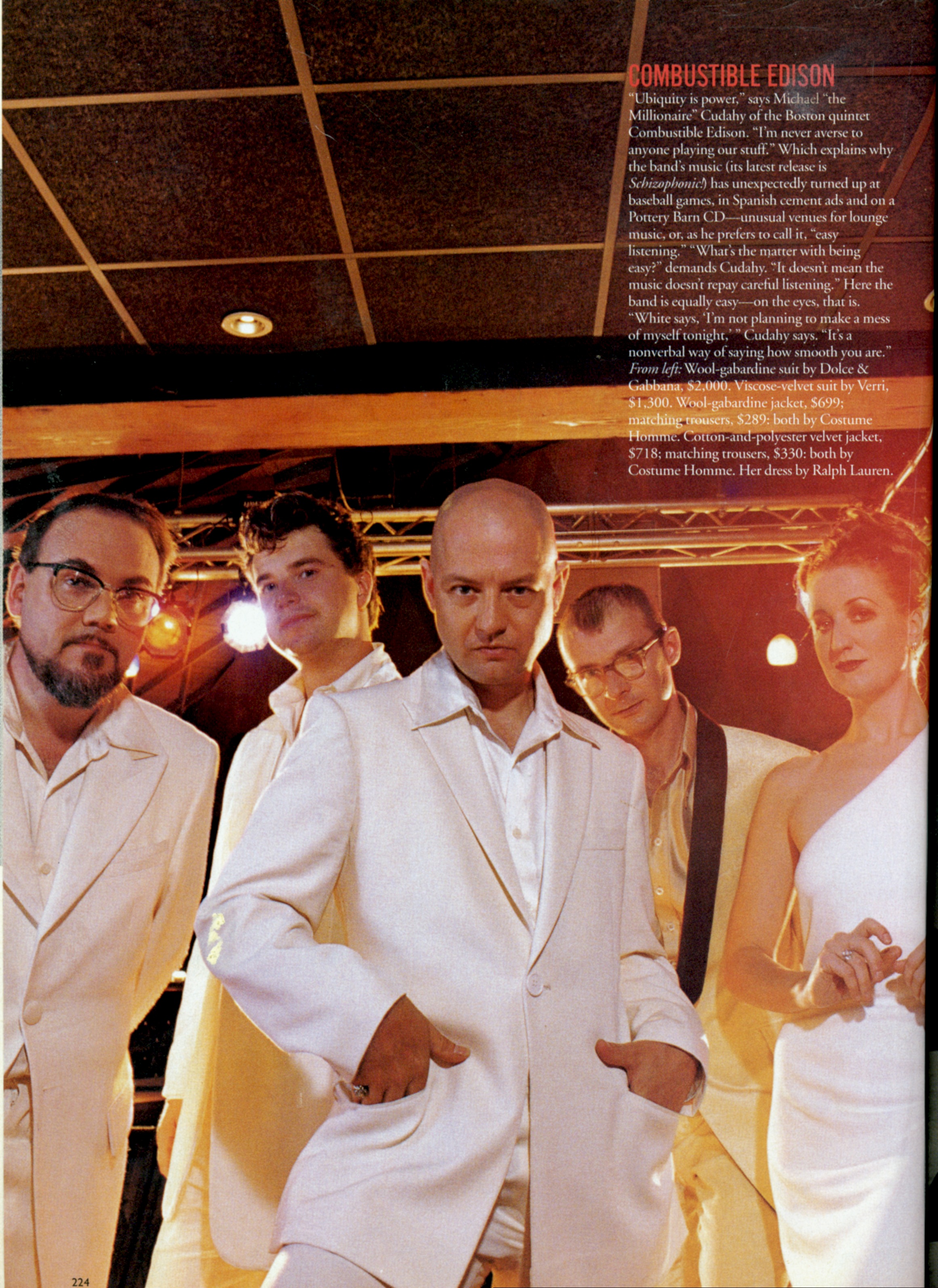
L: Double-strained? [cracking up]
B: [laughing as well] Those didn’t exist at the time.
So, the recipe was on the back cover of our CD’s. Before we had our sponsorship, Campari was confused—this was before they knew about our cocktail—and would ask, “Why did we just sell 20 cases in Madison, WI?” And it’s because we played a show in that area.
Our booking agent at the time was also booking Sonic Youth, Nirvana, and other grunge bands. And we come out at those same venues in our matching outfits, a vibraphone, and doing old Martin Denny stuff and our originals, and we drank cocktails on stage.
So, a lot of these venues would start having the, “Buy a ticket and you get a free Combustible Edison cocktail.” It became such a thing that Campari got in touch with us and we got a sponsorship.
My other band, The Del Fuegos, actually did the first rock beer commercial too. Miller paid us $150,000 to drink their beer on stage.
L: [laughing again] I’m sorry, what? Yes! That is excellent. I’d drink Miller for $150,000. That’s amazing. I’ll have to see if I can find this commercial.
B: It was like six cases of Miller delivered a night backstage. Every once and awhile, the Miller rep would find us with Bud backstage and we’d get in trouble. [laughs]
L: You have an amazing reputation for music and cocktails. So, how did you—I’ve read your story multiple times—become Boston’s person? Was that something you wanted to do for yourself or did someone just approach you like, “Yo, we know fucking nothin’, and we need help.”
B: It was actually through the music. I always drank cocktails. My grandmother gave me my first cocktail, a Manhattan, when I was 8 or 9, right around the corner in fact, at Warmouth’s. It’s long gone. But, as a young punk rocker, I was always drinking Manhattan’s or Old Fashioned‘s.
L: Made the right way or?
B: Oh no, no no no. They were made, a Manhattan back then would’ve been Canadian whiskey, and if there was any vermouth at all, it might be a splash of both to make it a Perfect Manhattan, and with the Martini & Rossi that had been on the rail for 4 years. [more laughter and ughs]
But, y’know, we had no idea we were supposed to refrigerate vermouth.
L: And the Old Fashioned with the muddled fruit like a cherry and orange or a lemon?
B: Yep. And some sugar at the bottom that would be crunchy and you know, an ounce and a half of something like Crown Royal or CC (Canadian Club) or VO (Seagram’s VO).
“I think it’s the conviviality that sets [us] apart. We’re the shadow of New York, but we’ve been a very innovative town with food and beverage.” – Brother Cleve
L: How do you think it went from the classic recipes, which are not those, to that, and how did we come back from that?
B: Part of it has to do with the second World War, there was no whiskey after Prohibition. To make whiskey appear magically, they would blend whiskey with grain spirit (vodka), blended whiskey was basically the only thing you could get in America in the 40’s, 50’s, and 60’s with some exceptions. Rye went out of fashion with Prohibition. It was considered the alcoholic’s drink. If you’ve ever seen the movie The Lost Weekend, sophisticated people did not drink rye.
During WWII, there was a ban on alcohol production, because everything went to making product for wars. America’s taste changed with the introduction to vodka after we allied with Russia. As we absorbed different cultures abroad, it became introduced into our country, and Hollywood particularly was behind some of the trends. You have the Red Scare and drinking vodka was a way to say “fuck you” to McCarthy and his congressional committee. The Hollywood elite would drink it while the government questioned them.
L: Seem like Hollywood influence really has played quite the part in our cocktail world: James Bond and the Vesper cocktail immediately comes to mind. This is really enlightening. Coming back to the original question, how did cocktails go from their classic to the (often bad) versions and come full circle?
B: So, in the 50’s, things became lighter and sweeter. Bacardi seized on this by changing the formula of its rum to be lighter, to compete with vodka. You start getting Harvey Wallbangers, White Russians, Bailey’s and Kahlua are introduced, and, of course, drugs. The hippies weren’t exactly embracing the drinks of “the man”, even though the punks were.
L: It makes sense. So, we spent a few decades saying “screw you” to “the man”, but, really, we were just drinking poorly put together drinks that were extremely high in sugar and chemical product. That’s unfortunate. That’s a lot of time in the industry where people aren’t learning proper technique, history, or just knowing what is quality product. I feel like this has been an issue in all aspects of food and beverage, especially during this time period.
B: It was definitely what was going on for a while.
Then, you have the 80’s and the cocktail renaissance starts slowly. In Boston, it starts with the B-Side Lounge in 1998. Silvertone opened in 1999. It probably also saw a start after the Boston Globe did an article on me back in 1996 that I was the “Cocktail and Music guy”.
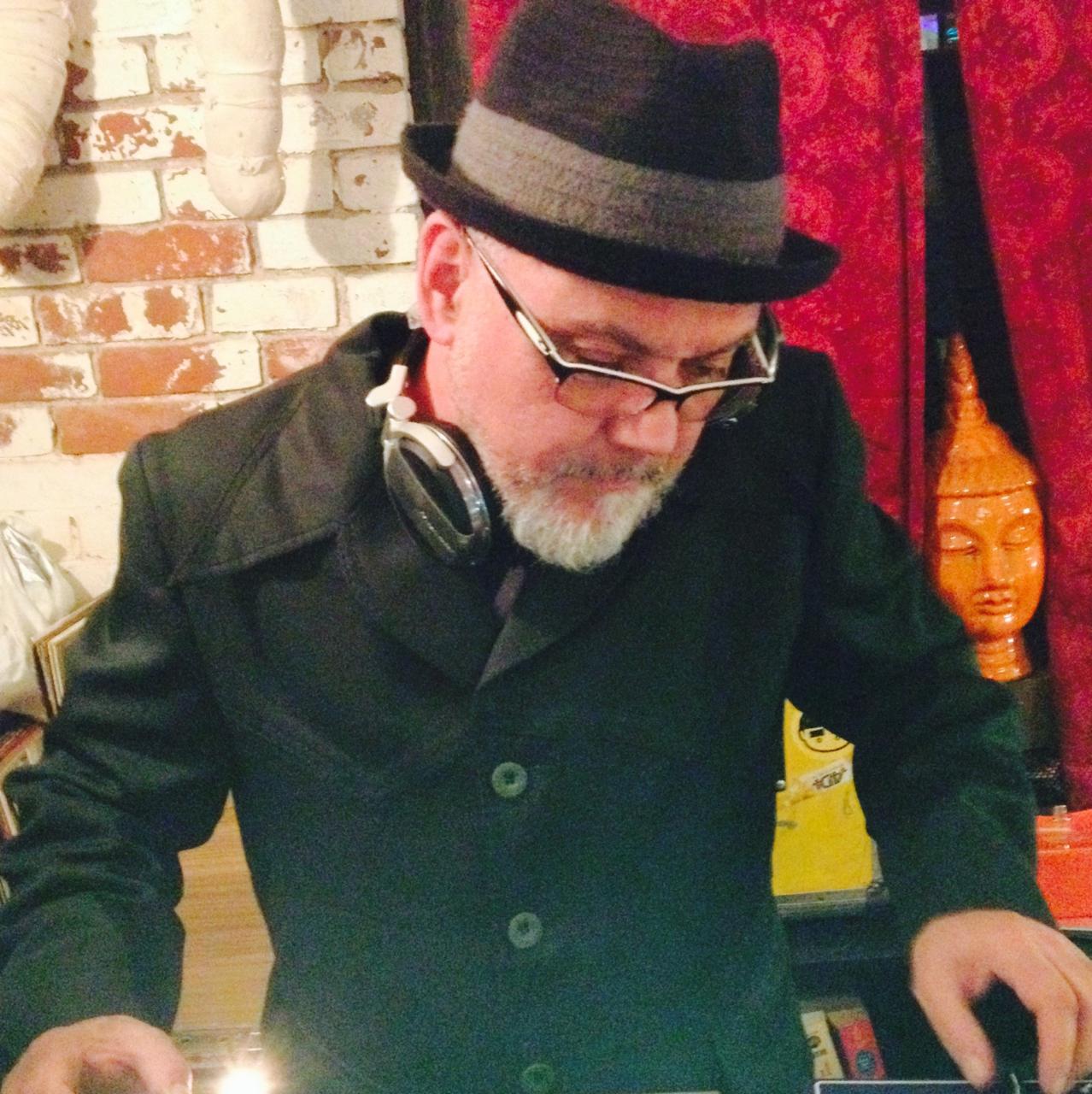
L: It seems like the startup tech industry started right about the same time as the cocktail renaissance. Especially since B-Side Lounge is where Google started.
B: This is also when I met Misty Kalkofen, who was then bartending at Lizard Lounge, and Jackson Cannon was an assistant booking agent there. (Misty Kalkofen and Jackson Cannon are also behind Boston’s cocktail renaissance.)
There was this weekly party called Saturnalia, which I wrote the cocktail menu for. But, I DJ’ed, and then the Boston Phoenix did an article about it, and, that Thursday night, we had a line around the block, so then the Globe and the Herald did a story. The next thing you know, it’s packed every night for the next couple of years. The guys at Landsdowne St. said we gotta get in on this and asked me to bring the show to another bar, so I started doing it in both places.
And Boston was where I met Patrick Sullivan who came in one night while I was DJ’ing and came to the booth and said, “You probably don’t remember me, but I was the bartender at your 40th birthday party and you taught me how to make all these cocktails, because I’d never made them before. Well, guess what, I’m going to open a cocktail bar. Can I hire you for music and to be a cocktail consultant?” And that was the B-Side Lounge—two years before it opened.
At the B-Side, our first thing was doing Manhattan’s with rye. There were only three ryes available at the time: Wild Turkey, Old Overholt, and Jim Beam Rye. The bottom of the menu would say, “Try a Manhattan made with Old Overholt rye.” And people would ask, “What’s rye?” And we would explain rye and the history of the cocktail…and still make it with the vermouth in the rail, because we still didn’t know we were supposed to refrigerate the vermouth. [laughs]
Speaking of the tech industry and launching the cocktail world into popularity, The B-Side was over on Windsor St. We were right by Kendall Square area, and the entire tech startup world was based in that area. They were ready for us, why? Because of Wired magazine and Paul Harrington’s cocktail column.
L: And my how it has expanded now.
B: It is incredible to see what has happened these past 25 years.
L: I heard a rumor that the post-shift shot of Fernet Branca also originated here, at this very bar (Silvertone) in fact.
B: So, Fernet Branca as a shot started in San Francisco with Garrett Harker. Started at North Beach after a shift. The old school Italian guys would be drinking it, so they started doing it—around 2000. Then he went to work at No. 9 in Boston and came to Silvertone after his shift with the crew and got them to order Fernet. So, around 2001 and 2002, it all started.
L: And my shift shot will now and forever taste of menthol and death. [laughs] Eh, it’s not for everyone. I’ll be okay with Becherovka. Cheers to everyone who loves Fernet.
So, Boston is one of the biggies where craft cocktails started. It’s fascinating how craft cocktail culture is also tied into the startup tech industry boom and why we still see such large crowds at bars after the end of the 9-5 work day. But craft cocktails and cocktail bars weren’t originally part of what made Boston’s drinking culture. What, to you, was Boston’s drinking scene before that?
B: The dive bar. The dive bar was a place that your father, and his father, and his father went before you. Whitey’s in Southie for instance. JJ Foley’s. Oftentimes, you were more frightened outside of the dive bar than inside. But, I lived in South Boston in the early 80’s and it was a very, very different place than it is today. And dive bars aren’t a thing anymore. Dive bars died to real estate. Actually, for Thirst Boston, I’m doing a walking tour of downtown where all of the great dive bars, tiki bars, lobster restaurants, gay bars, where all of them used to be. It was a big part of what made older Boston and really was what Boston was built on.

L: It’s interesting to see the change of the industries, the rise of tech and finance in place of familiarity and mom-and-pop. It is a thing.
We have seen a real loss of culture in many walks of life. It’s a big issue. I do so much work with the LGBTQ community. For instance, the Castro is not what it used to be. I’ve seen so many gay bars shutter and “gayborhoods” disappear. Ethnic areas erased. While all of our cocktail bars are incredible and a delight to have and honor cocktail history, they also come with the cost of the modern age.
B: It is sad in a way. I was just talking about this with Kelly (Coggins), president of the Boston Bartender’s Guild. We were talking about how sad that is that there are, well, no more gay bars and very few actual dive bars. Boston used to be all dive bars. Now, you see expensive condos, schools.
Actually, a couple of years ago, Barbara Lynch had this event where she flew in a bunch of the top bartenders from all over the country, and we all ended up at Doyle’s. 16 of us ended up at Doyle’s in a battalion of cabs and drank pretty much all of the Irish whiskey in the place. But, we had to take them to Drinking Fountain, one of the last remaining dives, and we just had a fantastic time. David Wondrich put it on his “Best Bars in America”. And it is a wonderful place. A beer and a shot.
L: So, that is what makes a dive bar a dive bar? A beer and a shot and a comfortable setting? What about a cocktail?
B: Well, they can likely make you a decent cocktail.
L: I imagine the whiskey selection is a bit better these days. Not just Crown Royal and 4-year vermouth anymore. [I wink and we both laugh.]
B: Yeah, and bitters too. You could say things have changed a little bit.
L: My last question, Brother. What would you say defines Boston now?
B: Now? I think it’s the conviviality that sets it apart.
We’re the shadow of New York, but we’ve been a very innovative town with food and beverage. Probably because it is smaller and because we have a high tech industry here. Also, the amount of universities.
People are looking for things outside of their comfort zone. And also for comfort, if that makes sense? Being welcome and feeling comfortable enough in that feeling to try something new.
L: Brother, it’s been a pleasure. Thank you so much. The places you’ve worked at and people you’ve worked with: It says how much you have been part of the cocktail culture here and the history behind it.
B: Thank you. I’m sure we’ll see each other soon again.
And two weeks later, I ran into Brother Cleve at Tavern Road. Because, of course.
Be sure to check out Thirst Boston April 28-30 and go on Brother Cleve’s tour. Also maybe drink a little bit too.
The Most Popular Local Beer Brands in Washington, D.C. Bars
Though American craft brewing has flourished since the ‘80s, the DC area was very, very late to the game. In fact, until DC Brau began production in 2011, no breweries had operated in the city since 1956.
Since that inflection point, the local brewing scene has exploded: scores of craft breweries now operate in the greater Washington area. Local beers are making their way from breweries to DC bars—including BevSpot users.
We’ve broken down our bar order data to find the most popular beer brands for Washington, D.C.-based BevSpot users, both locally-made and overall. Subscribe to see how these evolve quarterly as our user base grows!
The following material aggregates 2016 and early 2017 distributor order data from BevSpot users in the greater Washington, DC metro area; the majority of these users are in the city proper. All figures represent percentages of orders in dollar terms.
A Long Road to Prominence: Women Behind the Bar
From civil rights protests, to courts, to competitions, women continue to work and fight for their craft…
Last time out, we reviewed a cocktail recipe book made to honor and celebrate feminist icons from all fields all around the world. Now, we’re gazing inward and taking a look at the state and history of women behind the bar.
From Ada Coleman, the unlikely head bartender of The Savoy’s American Bar in a time where it was illegal in many places for women to even tend bar, to a famous all-female bartending competition we’re delving into the long trip women have had from obscurity to prominence behind the bars we all love.
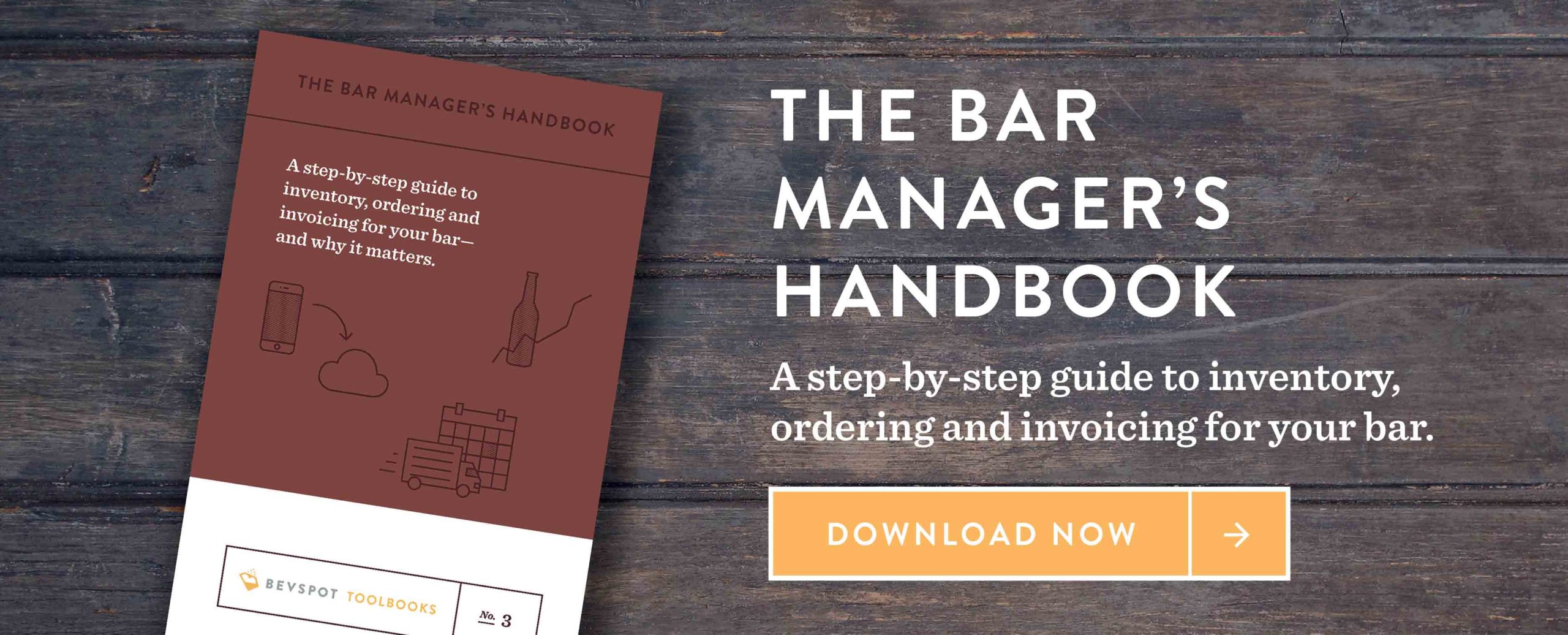
A Past on the Rocks
According to Jeanette Hurt, the author of Drink Like a Woman: Shake, Stir, Conquer, Repeat, in the early 1900’s, there were around 150 women bartenders in America. This made up just about .3 percent of American bartenders. By comparison, there were about 7000 women doctors, making it, as Hurt says, “50 times more common to see a woman wielding a stethoscope than a shaker.”
Despite gains women made over the years, especially filling in and gaining jobs during World War Two, laws on the books prohibited women from bartending, or in some cases even serving or entering establishments that sold liquor, existed in nearly thirty states as recently as the 1970s. From Hurt again, “This isn’t ancient history. I didn’t realize that women in some places weren’t allowed to bartend until 1971 or ’75.”
The Supreme Court even ruled in favor of keeping women from bars in 1948. But when a protest and a fight is coming women have shown themselves more than equal to the challenge. In 1971, the California Supreme Court took up a case of job discrimination thanks to the efforts of a feminist clerk named Wendy Webster Williams. The court struck down a sexist ruling and opened the way for women to bartend. Agreeing with the court’s own opinion, any kind of discrimination based on gender et al. is “arbitrary and without support in logic or experience.” Across the country laws the precedent began to take hold.
The cumulative effect of these victories and bold actions is that, despite a lack of recognition, women now make up 60 percent of bartenders nationwide.
Notes From the Frontline
This isn’t to say that the transition has been a smooth one, or that today it’s all gin and rose water. Women still put up with and work against a flow of obstacles, from sexism to customer expectations to unequal pay. For example, studies show that women only earn 87 cents to every dollar a man does behind the bar, and while the overall number of women bartenders has made them the majority, high end bars still sport a large majority of male bartenders. While that gap in pay is smaller than in other industries, it still exists as a constant burr to be dealt with.
Customer expectations can similarly detract from a day at work. Being mistaken for a server or a barback is a regular phenomenon. Being hit on and in some extreme cases groped is an occurence I can’t attach the word “rare” to. Women in the hospitality field are actually five times more likely to file sexual harassment complaints than in any other field.
But, let’s not be entirely full of doom and gloom.
Women as bartenders are still on the rise. Ordinances that took years to change, whether in the courts or town by town, are disappearing and opening the way for a new generation of women. Organizations and programs for training, education, and anti-harassment are cropping up all over the country. The Dead Rabbit Grocery & Grog and Death & Co are among a number of world renowned establishments with female head bartenders or bar managers. Across the board, while not always in a straight line, women continue to fight and to make progress.

An Encouraging Future
And the gains women make continue to grow not only for themselves, but for the community around them. In 2011, despairing of the lack of women bartending in the best bars in the world, Ivy Mix (2015 Spirit Award Bartender of the Year) and Lynnette Marrero (Bar Consultant and founder of LUPEC) founded Speed Rack, a bartending competition for women which we’ve written about before. Girls with Bols, a mentoring group dedicated to training the next generation of great women bartenders, was founded by Kate Gerwin, the first woman to win the prestigious Bols around the World Championship. All around people are propping up a fast growing force of women who are taking their spot in the world of bartending, crafting classic cocktails, brewing, etc.
Beyond the national, local groups are popping up to foster individual community growth as well. Groups like the Bar Biddies, founded by Buffalo bartender Kerry Quaile, bring together a community not just of industry experts but of regular people looking to learn, to enjoy themselves, and to support charitable causes.
“Having a community of women now in this industry is not only a great achievement, but also an introduction to a different approach to cocktails and bars in general,” says Quaile. Changing the demographics of the community to reflect reality not only offers up a better representation of a bar’s patrons, but a widened view of what a great craft cocktail can be.
From fighting Prohibition to smashing the patriarchy, women have a long history with the bar, whether behind it, defending it, or redefining it. The future, for all of us who enjoy a good drink, is in good hands.
Schedule 15mins to chat with a product specialist
Start a FREE Trial Today! BevSpot offers full product education and account setup for all customers! No card Information needed!
The Most Irish U.S. Cities (Based on Guinness Orders at Bars)
How “Irish” is your city?
Because we’re based in Boston, we here at BevSpot take our St. Patrick’s Day drinking very seriously. So seriously that, in celebration of this auspicious day, we wanted to see how other American cities fare at getting their Irish on. We did this by comparing their consumption of a go-to St. Patrick’s Day beverage: Guinness.
“My favorite food from my homeland is Guinness. My second choice is Guinness. My third choice – would have to be Guinness.” – Peter O’Toole
Guinness has been a staple of St. Patrick’s Day drinking for almost as long as it’s existed. First brewed in Dublin’s St. James’ Gate Brewery in 1759, it’s generally considered a staple of Irish cuisine by most Irishmen and women. It’s known globally for its iconic dark color and thick, creamy texture. And with sales in over 120 countries, it’s one of the most successful beer brands internationally and easily the best-selling alcoholic drink in Ireland proper.
We were curious to see how Guinness actually performs amongst our users. Let’s break down the performance of this historic beer.
The following material aggregates 2016 and early 2017 on-premise beer order data from about 300 BevSpot users across ten major metro areas. All figures represent percentages of orders in dollar terms.
10 Apps To Manage Your Bar or Restaurant In 2017 via Bizimply
Read the original story here
Founded in 2014, BevSpot has an online tool that helps restaurant and bar managers keep track of their inventory and spending. Learn how to manage inventory, ordering and invoicing to make your bar more profitable on this user-friendly platform.
Here’s what they say about it:
Manage your bar online and access all of your bar’s data in real time. Check out their great blog too, it is literally jam-packed with everything you need to run a successful bar. Learn more about our food inventory app today.
Testing cocktails designed by women bartenders
Paying tribute where tribute is due…
Throughout history, there have been two constants that humanity has turned to in times of great need: the efforts of extraordinary people, and alcohol. As another excuse to imbibe for science and profit, we are once again picking another tome of gastronomic drinkery and wonder to work our way through. In celebration of Women’s History Month, we’re running down a book of cocktails designed by women bartenders to honor extraordinary feminist icons and causes.
Drink Like a Woman: Shake, Stir, Conquer, Repeat by Jeanette Hurt with art by Paige Clark offers up more than 70 recipes paying tribute to 400 years of badass and bold women. In addition, it offers hangover cures, a drinking game, tips on filling out your personal bar, and fascinating histories of all the incredible women and moments in drinking and feminist history honored within.
Within these pages Hurt has assembled the works of two dozen bartenders, distillers, chemists and the like that is meant to delight, to educate, to honor, and, of course, to be drunk. So, being in the midst of an international celebration, it’s time to drink.
Ada’s Hanky Panky
Our first drink goes all the way back to the beginning of the rise of the female bartender. As late as the 1970’s, laws on the books prohibited women from tending bar if they weren’t related to the owner of said bar. So, to rise to head bartender in 1899 was something of a feat. Ada Coleman accomplished just that at the age of 24 at The Savoy, serving luminaries from Mark Twain to the Prince of Wales.
Ada’s Hanky Panky is based off the original, created by Coleman herself. Equal parts gin and vermouth, with a few dashes of fernet and orange bitters, the resulting drink is delightfully earthy, and packs a strong kick that would make its namesake proud. We’re off to a good start it seems.
Invasion of Women
In 1933, America corrected one of our great national mistakes and repealed Prohibition, triggering a rebirth in the Great American Bar. In 1935, columnist Dan Marquis put on his mansplain hat and decried the end of the male-only ballroom, declaring it “gone forever, killed by this invasion of women.” It can only be assumed that the women of the world continued putting their feet on the brass rail and going about . This twist on the daiquiri is a tribute to those cocktails designed by women bartenders, and possibly in memory of at least one bitter man.
Like with the Dead Rabbit Drinks Manual, many of the drinks require that several of the ingredients be prepared ahead of time. And, like with the Drinks Manual, we have found a love of preparing our own ingredients rather than buying them. This time around, it’s oleo saccharum. The added rich citrus flavors complemented the lime and gave a better flavor profile than just the sweetness that simple syrup might provide when added to the rum and lime juice. Anyways, good kick, great flavor, let’s move forward a few decades.
Lucille’s Balls
Lucille Ball was a legend. She started own of the most successful shows in television history at an age when most women in television are shunned. She was the first woman to be “expecting” on national television. She owned the rights to her show, and, when she bought her ex-husband out of what would eventually become Paramount Studios, she told Carol Burnett that “that’s when they added the ‘s’ to the end of my name.”
Ms. Ball’s drink is the cuba libre—the lighter, more citrusy rum and coke. Using Mexican coca-cola, which uses real cane sugar as opposed to corn syrup and rhum agricole which uses cane sugar as opposed to molasses, Lucille’s Balls would perhaps be a bit too light and sweet (no, there is no better way to phrase that), but the addition of a few dashes of Fernet-Branca counteracts this and adds complexity, spice, kick. All descriptors that we think Ms. Ball would be proud of.
Mind the [Wage] Gap
This last drink in the review is perhaps the easiest to create, and focuses more on a damning play on words than any one figure. Calling attention to the fact that women on the whole make only 77 cents for every dollar made by a man, the Mind the [Wage] Gap is a screwdriver. Freshly squeezed orange juice and vodka, with a dropper of orange bitters besides. The drink is simple, goes down easy, and is a perennial favorite. The reality that inspired it is anything but.
But, when life gives you lemons, make hard lemonade. And, when life gives you a preternatural talent for wordplay and mixology, make thinly veiled and well deserved allusions toward an annoying and sexist remnant of days passed. In this instance, I award points for turn of phrase, taste of cocktail, ease of creation, and the boldness to call out nonsense.
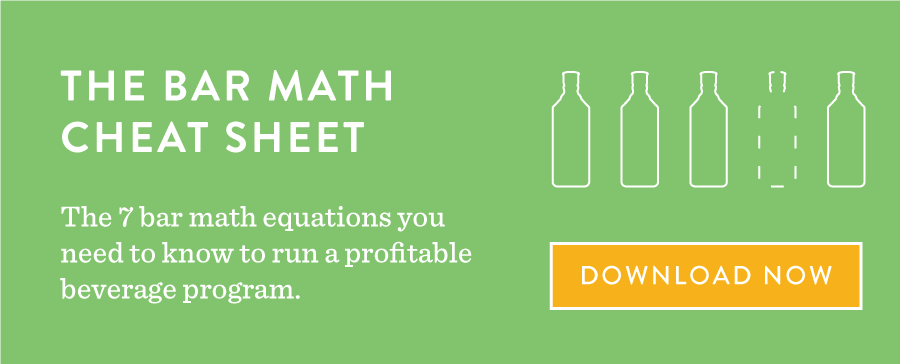
The Verdict
While it may not be the impressive looking and feeling tome that the Dead Rabbit Drinks Manual is, Drink Like a Woman is an impressive book nonetheless. It’s small, unassuming, confident. The recipes are not the biggest and most complex, but they work. Like matching glasses to drink, it isn’t about finding the biggest punch bowl, it’s about finding the one that fits.
These recipes are expertly crafted, easy to prepare, and delicious. Hurt has put together an all-star team to celebrate an all-star list of women throughout history. The book is a joy to read, and the recipes a joy to prepare. I’m thrilled to delve in deeper to not only discover new cocktails, but the history of incredible women I may not have known.
The history of women behind the bar has always been, let us admit, somewhat sexist. But if this book and these cocktails designed by women bartenders, it is well on its way to something better. As Hurt puts it, “There are no ‘girly’ drinks. There are no ‘manly man’ drinks. There are just drinks.” We can all drink to that.
Schedule 15mins to chat with a product specialist
Start a FREE Trial Today! BevSpot offers full product education and account setup for all customers! No card Information needed!
Chicagoans Drink Double The Miller Beer & Whisky Than Rest Of U.S.: Study
Chicagoan Drinking Habits, At-a-Glance
Chicagoans drink a lot of whisky, vodka, and Miller beer—much more so than other parts of the country—according to a study released last week from BevSpot. The study, which tracks restaurant, bar, nightclub, and hotel booze orders in 2016, shows that Chicagoans order more than double the amount of Jack Daniel’s and Miller beer when compared to national averages.
BevSpot is the Boston-based company that’s developed web-based software so clients can manage their alcohol inventories. The study’s data is from their Chicago users, which include about 100 bars, according to Stephen Ngo, BevSpot’s operations analyst.
The Full Report
How Bars and Bartenders Help the Political Machine Run in DC
Secret bars, signature drinks, and the wisdom of savvy DC bartenders have lubricated the political process for hundreds of years.
The stage is lowly lit. Sitting around a table revolutionaries and founding fathers John Laurens, the Marquis de Lafayette, and Alexander Hamilton begin a toast. “Raise a glass to freedom,” They opine on their place in history, “And when our children tell our story, they’ll tell the story of tonight.” They take a drink.
True this is taking place on a stage in New York, representing a tavern in New York, but the message is the same either way: our political culture has always been tied to the drink. Thanks to the back-room dealings of people like Hamilton and James Madison and Thomas Jefferson that culture, those drinks, those stories, take place in Washington, DC.
The Senate, The House, and Shoomaker’s
A town with a history as robust and well-documented as Washington, DC’s is rife with stories not just about the founding of a nation, but with the drink that helped float it along. And float along it did. The Rhodes Tavern opened in 1799. For over a century, it served as a place of meeting and business for politicians and the like. When the British burned DC in 1814, Congress took to The Rhodes to assemble rather than not meet. The American people relying on their taverns and saloons after a British invasion is somewhat of a theme in our history.
Politicians relying on bars and taverns to conduct business is a similar practice that we’ve made regular. In the early 1900’s, Rum Row—the two mile stretch of Pennsylvania Ave. from the White House to the Capitol Building—housed 47 different bars, or roughly one every 200 feet. It was an opportune stretch of road that encompassed not only the houses of government but also the centers of journalism that reported on the same. Chief among these in those early days was a place opened by a Civil War vet named William Shoomaker. Shoomaker’s was quickly established as the unofficial “Third Wing of Congress” because of the frequency with which you would find politicians taking in a drink with one another, arguing policy, or just shouting one another down.
Shoomaker’s is also famous for crafting the District’s signature drink: The Rickey. Originally made by combining mineral water and half a lime’s worth of juice (peel included) to lobbyist (and eventual owner of Shoomaker’s) Joe Rickey’s favorite bourbon, the drink now comes with hundreds of twists and drops of personality from any bartender serving it. It has become so popular that DC has declared July to be Rickey Month, hosting contests built around the signature drink and its variations. This comes much to the chagrin of Joe Rickey, who hated having the drink named after him, almost as much as seeing its bourbon and whiskey replaced by gin.
Bi-Partisan Bars
Adding politics to the already chatty nature of bars and the loose lips liquor can inspire, bartenders in DC learn to walk a careful line. “You learn to keep your mouth shut,” says Derek Brown, owner of several of DC’s best bars and National Archives Chief Spirit Adviser. It’s a balance between keeping the peace, keeping from spilling state secrets, and giving public figures a moment of quiet. “One of the things that people cherish here is that there is that level of relative anonymity.” says Jim Hewes, who has been manning the Round Robin Bar at the Willard for 30 years. “Somebody spends five minutes up the street doing something and it’s all over the newspaper. I’ll have somebody sitting in the corner for six or seven hours holding court and nobody knows about it.”
Though bartenders like Hewes and Brown see the need to keep the peace, they also see fewer and fewer opportunities to do so. It seems politicians drink across the aisle less and less. In today’s world of hyper-polarized politics the talk at bars is more likely to filled by lobbyists than politicos sharing a drink. And it’s somewhat of a missed opportunity. From Brown once more, “Washington worked. And Washington drank. That Washington seemed infinitely more agreeable.”
Living History
Though Shoomaker’s and Rum Row are long gone from the streets of DC, their spirit remains. Patrons and citizens can still track down history all across the district, and bar crawl their way through the foundation of our nation’s history with drinking and its attachment to politics.
The Willard Hotel and its aforementioned Round Robin Bar for instance. From Derek Brown, “The Willard has such an illustrious history, and was certainly a drinking place for many people,” including but not limited to Martin Luther King Jr, Mark Twain, PT Barnum, and a host of DC’s political celebrities.
Or the 1331 Lounge, so named after the address of Shoomaker’s, who keep alive the legacy of Rum Row and the drinks created there.
While it doesn’t cater to the same political clientele it may once have, Off The Record still carries with it all the mystique and sense of occasion and presence that it carried when it was the go to destination for the nation’s political elite.
Let’s Have Another Round Tonight
George Washington once described it as a “duty in drinking.” Grover Cleveland cut back his consumption to a bare gallon of beer a night the first time he ran for office. Thomas Jefferson spent nearly $300,000 dollars of today’s money filling out an extensive White House wine collection.
Drinking, and discussing politics over a drink, has always been a part of our culture as a nation, whether you’re a radio caller or a sitting United States Senator. As one journalist reported it, “At the tables in the restaurant far into the night will be found groups of politicians, members of the House of Representatives and Senators.” It was a way to burn off steam and come together to work on getting things done, or at least getting along, with people you ostensibly disagreed with on a level from simple policy to something more molecular in nature. It seem’s we’d all be better off with another cocktail. So, raise a glass to freedom, and let’s all have another round tonight.
Schedule 15mins to chat with a product specialist
Start a FREE Trial Today! BevSpot offers full product education and account setup for all customers! No card Information needed!
The Most-Ordered Beer and Liquor Brands in Chicago
While it’s often overshadowed by its northeastern counterpart, the nation’s Second City is by no means overshadowed when it comes to its beer and liquor offerings.
While Prohibition fundamentally shaped the city, its contemporary cocktail culture flourishes while throwing off Hollywood’s clichéd romanticization of the era. Meanwhile, the contemporary state of Illinois is home to a multitude of breweries, making it another hotspot in the American craft beer revolution.
The greater Chicago area is home not just to one of the most unique bar cultures in the country, but one of the biggest communities of BevSpot users—some of which we’ve covered before. We decided to take a look at their favorite beer and liquor brands.
We’ve broken down our bar order data to find the most popular beer, whiskey, vodka, tequila, rum and gin brands for Chicago-based BevSpot users. Here’s what we found.
The following material aggregates 2016 order data from BevSpot users in the Chicago metropolitan area, as defined by the U.S. Census Bureau. All figures represent percentages of orders in dollar terms.
What’s Speed Rack? A Look Into a Boss Lady Bar Competition
Beating cancer, empowering women, and educating the masses…
Speed Rack, the high speed, extremely technical, cancer-fighting cocktail competition is the brainchild of Ivy Mix and Lynnette Marrero, veteran service industry goddesses and modern mixology legends doing incredible work in front of and behind the stick. If it wasn’t already evident, I’m fanboying a bit hard over these two, and believe me, you will too when we’re done.
Getting to know Speed Rack means getting to know who Ivy and Lynnette are. To do that, let’s go back to 2008.
The Women Who Shake Up Revolution
Speed Rack starts in 2008 with Ivy Mix: a soon-to-be well-known bartender whose attempts at breaking into the cocktail bartending world of New York City were often hindered by critics of her lack of technical bar skill despite incredible liquor knowledge from jobs and life spent in multiple countries. (Try asking her about mezcal.)
She actively sought out places where women had space to learn and thrive in the (still) male-dominated craft cocktail world. Cue St. John Frizzell of Fort Defiance giving Ivy her first craft bartending gig.
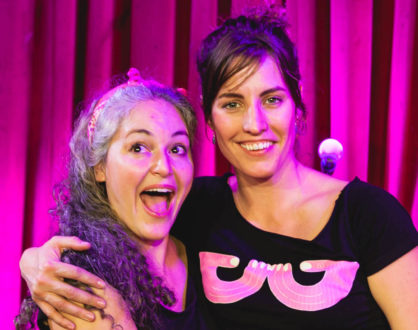
Along a similar timeline, Lynnette Marrero was already an established part of the modern cocktail revolution alongside cocktail savant Julie Reiner at The Flatiron Lounge.
She won a James Beard award in 2009 for mixology, and was president of LUPEC NYC (Ladies United for the Preservation of Endangered Cocktails) when her and Ivy made acquaintance. Leading up to that, Lynnette had hopped out of the bar and into brand work and started to really notice men were being promoted even though she was seeing women bartenders. That’s when she decided to become more involved and met with Boston local legend, Misty Kalkofen of Boston’s LUPEC and brought it to NYC. They created the “lady network” of NYC bartenders through LUPEC NYC—a network which Ivy Mix soon joined.
Jump ahead to Ivy and Lynnette’s 2010 meetup at Mulholland’s in Williamsburg and further brainstorming at Mayahuel, and we’re at July 2011 with the first Speed Rack competition where 60-100 people were there and ready to cheer on the first ever competitors.
Competitors were/are given four classic cocktails selected by judges from within the industry and must create the cocktails with proper form, speed, and accuracy. If you think making four classic cocktails in under two minutes is easy, think again. Stirring ice needs time to dilute a cocktail, and over or under shaking a drink can throw it off too.
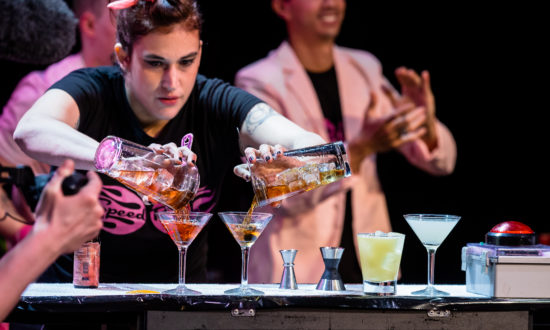
The Need For Speed (Rack)
Beyond the craft cocktails and raising money to combat breast cancer, Speed Rack is stirring up something even bigger: it’s keeping the conversation about sexism at the forefront by creating a platform for women of various intersections (think gender, sex, race, etc.) to speak out about their realities within and outside of the service industry.
Ivy said to me, “It’s a good time to be a woman in our industry. Maybe Speed Rack helped with that, but now, it’s like if you don’t have a woman behind your bar, what’s going on there? It is a very charged time in our world. We just did Speed Rack in Atlanta. Atlanta is a majority African American city, and we had lots of African American women competing. We do this thing with Del Maguey and The 86 Co. called The Sisterhood Project. The day after Speed Rack Atlanta, they had an open panel and conversation. One woman, she’s 40, she’s black, a mother of two children, and single, and bartending 5 nights a week, and she said, ‘Straight up. I’m not going to get the opportunities of 90% of the women in this room.’”
Lynnette echoed similar thoughts, “Our industry has always been more progressive. In the wars, women had to take over the bars. Hence to Ivy’s point, we can be an example of what can work and what can be. We are dealing with, more vocally, a lot of issues that a lot of industries haven’t gotten to yet. I believe as a unit we will be stronger for it. I hope that we will be an example to other industries.”
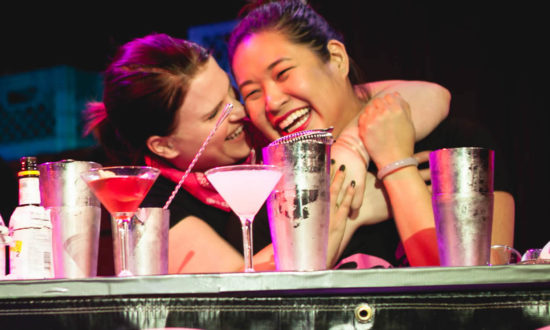
The Success of Speed Rack
For a competition that started out with 60-100 people, Speed Rack venues are seeing up to 700 people now. Lynnette mused, “We didn’t think we’d be doing this 6 years later. Maybe it’s because of the last year and a half leading up to the election that a lot has been poured into the women’s community, and the mission. We’ve had probably over 800 women compete and raised over $500,000.”
But money doesn’t define success for Speed Rack’s creators.
Lynette explained, “At the end of the day, what we did was built a company dedicated to the advancement of women and we are doing so many things more so. We worked with brands to incorporate education for women. It’s not about profit. It’s about achieving your mission and your vision.”
Ivy chimed in, “Yes, our careers grew exponentially because of Speed Rack. But that wasn’t the reason behind this.”
Clearly, as Ivy was voted Best American Bartender at the 2015 Tales of the Cocktail Spirited Awards (think the Oscars of the service industry), and is a proud partner of hotspot Leyenda in Brooklyn. A 2009 James Beard winner, Lynnette Marrero consults with Diageo, Zacapa Rum, and Perrier among others, and is part of the mind behind some of the best cocktail programs in NYC as well as an influencer behind other cocktail competitions. On the rare occasion Ivy and Lynnette aren’t traveling, you’ll find them at home somewhere around NYC.
I couldn’t help but wonder how they find the time to do all that they do. Turns out, great mentorship (both have a mentor in the aforementioned Julie Reiner) and a good work ethic combine into terrific talent. Also, finding that spare time to take care of oneself: Ivy does yoga while Lynnette found kettlebells. Even when the world wants your attention at every given moment, they prioritize self care.
Lynnette explained, “For some people, they just want their bar. Ivy and I both enjoy travel. We love seeing what is happening all over this world. I think that’s what is driving us. The passion of seeing a community being built. A global ambassador job is 3 weeks on the road. Our schedules are pretty insane, but it just depends on where you want to be and how you want to do it. I’ve been married 13 years, and my career has changed, but it’s about straight entrepreneurship and what you want to do for yourself. It’s waking up 30 minutes earlier than you think you have to. Check your emails, respond, and if you need to go back to sleep, go back to sleep.”
“You need to have a good work ethic. We like working. I’m not daunted by a new project. If you don’t have a strong work ethic in any industry, you’re not going to get anywhere,” Ivy added.

The Future of Speed Rack
We all shared in Ivy’s laughter when she said this about Speed Rack:
“It’s like a child. We are just following and seeing where it goes. We can’t stop. Women need us. We’re raising money for breast cancer. Our business is successful, finally. *laugh* We want to have more synergy globally. We’re seeing a lot of talk about sexual harassment. We need to educate and train about these conversations.”
When you go to Speed Rack competitions (if you happen to be in Boston, our region’s Speed Rack competition is happening this-coming Sunday March 5th—register!), raise a glass to the women in the industry, to the fight against breast cancer, and to continuing to fight gender inequality. We can all drink to this.
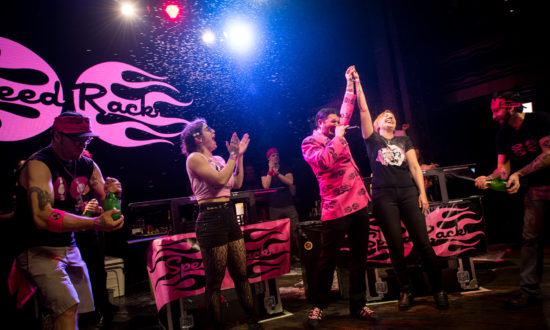
Schedule 15mins to chat with a product specialist
Start a FREE Trial Today! BevSpot offers full product education and account setup for all customers! No card Information needed!
6 Profitable Rum Cocktails, Ranked by Bar Pour Cost
6 Profitable Rum Cocktails
Our previous analyses of bar profitability data looked at our customers’ overall profitability metrics. We found that pour cost, the preferred measure of efficiency for beverage programs, is around 15% for spirits & cocktails; this means that before paying wages and rent, the median BevSpot bar is getting an 85% gross profit margin on your Moscow Mule.
Actually, that’s a lie. The 15% aggregate pour cost measures general profitability for individual establishments, but it represents an average of all the various drinks being sold by those bars. Costs and pricing can vary widely between drinks, especially cocktails: the profit margin on a bar’s Negroni recipe almost certainly won’t be the same as that of an Old Fashioned.
Knowing the costs and profit margins of various recipes is critical for designing and pricing a successful drink menu; in this and a few upcoming articles, we’ll be crunching these numbers for a range of common cocktails. To make comparing between drinks easy, we broke these recipes down based on the liquors that they contain.
To find the profit margins that BevSpot users are pricing into their menus, we compared their drinks’ list prices to their unit costs before adjustments for spillage and comped drinks. We also estimated the basic cost of each recipe by comparing users’ unit costs after those adjustments. Doing this allows cleaner comparisons between each cocktail on two metrics: typical profit margins, and typical unit pour costs.
We’ve taken a look at sales data from 9 metro areas across the United States to see which popular cocktails are the most and least profitable for bars. Here’s what we found for 6 rum-based classics.
Schedule 15mins to chat with a product specialist
Start a FREE Trial Today! BevSpot offers full product education and account setup for all customers! No card Information needed!
Testing the Best: The Dead Rabbit Drinks Manual
Exploring a legend’s written legacy…
Every bartender, whether professional or weekend warrior, can always stand to learn a new trick. And we could all do a lot worse than starting with recipes concocted and rejuvenated by a team that’s won awards for World’s Best Bar, World’s Best Cocktail Menu, World’s Best Drink Selection, and Best American Cocktail Bar. We are writing of course about The Dead Rabbit Grocery & Grog, and their phenomenally written Dead Rabbit Drinks Manual.
Written by founder Sean Muldoon, bar manager Jack McGarry, and Ben Schaffer, The Dead Rabbit Drinks Manual is a weighty and beautifully designed tome. Featuring not only a vast array of recipes, both archaic and modern, but also the fascinating history of Muldoon and McGarry’s rise to the top of the cocktail world, the book feels less like a simple recipe guide and more like a grimoire of mixological mastery.
Histories of not only the aforementioned Muldoon and McGarry but of every single drink in the collection, ranging from fizzes to toddies to group-sized punches to an entire chapter on absinthe provide valuable knowledge for both the cocktail newbie and the master bartender dispensing sage wisdom to patrons. Anecdotes, gorgeous photos and images recalling the Gangs of New York style Muldoon and McGarry aim for in their establishment, and a truly astonishing heft and texture to this book lend it a weight not just of knowledge and collected wisdom but a tactile feeling of import and occasion.
But, at the end of the day, a book about making cocktails isn’t any good if the recipes themselves don’t stand up along with the design and story of the book. To that end, we tested a few recipes from different sections to see just what everyone has been going crazy about. Here are a few of the results:
Absinthe, American Style
Starting with perhaps the simplest, most recently illegal recipe in the book, American Style Absinthe is a blend of California St. Germain Absinthe, chilled water, and sugar syrup. But, it is not complexity that creates a great cocktail, but balance. The syrup and water distill and and balance the stronger flavors of the sugarless absinthe and make a much lighter drink with a satisfying kick.
Bonus points for having a high bang for buck ratio as the drink can be created in seconds, especially if you make the syrup ahead of time. As a sidenote, this is also the first cocktail in which I have used homemade simple syrup as opposed to storebought. We are never going back.
Maiden’s Blush
After the stronger flavors of the absinthe, the next chapter on the list was “Sours and Fizzes.” This chapter maybe more than any other featured updated and modernized versions of classic drinks whose recipes sometimes dated back more than a century. Maiden’s Blush is a citrus and fruit infused drink that requires the maker to prepare the ingredients on the side. And so, in addition to simple sugar syrup, we added the raspberry cordial to the list of new things we’d make by hand.
The Drinks Manual was quickly becoming not just a collection of recipes or history, but a cookbook as well. Mixing in the cordial, lemon juice, gin, and a small amount of absinthe (which was apparently becoming a fast friend of ours), the Maiden’s Blush is a sweet concoction with a beautifully balanced kick of citrus and Old Tom Gin. So far, so good.
Irish Coffee
For all the different and incredible sections Dead Rabbit has to offer, my favorite is the section entitled Diverse and Invalid Drinks. Born from an interest in drinks historically made as concoctions for the ill these drinks offered selections that were unique, not historically fitting into any of the categories the book covers before this final chapter.
Whether created in an airport, by Jonathan Swift, or a cafe in San Francisco, Muldoon and McGarry always wanted an irish coffee in their shop, and this one is exquisite. Irish Whiskey and and the caramel molasses taste of Demerara sugar syrup (again, homemade) create a heavenly blend in coffee sitting underneath a layer of thick heavy cream. They really are right. If there is one ingredient to splurge on here, it’s the cream. We may never leave the house completely sober again.
The Verdict
I’m usually a simple drinker. Beer, whiskey, whatever it was I usually drink it straight with very little if any pomp or mixing required. The Dead Rabbit Grocery & Grog Drinks Manual is a treasure. I’ve got post-it notes sticking out of pages and highlighted sections. The history is fascinating to read about. The design of the book evokes a forgotten age of speakeasies and strong drinks.
It’s a deep well I’ll be returning to again and again, and one that I wager even the masterful and experienced of bartenders and managers can learn from. It’s true not every drink was made with the exact recommended brand, my expertise surely pales in comparison to the professional. But as Muldoon and McGarry note in their introduction, “We must never let the perfect be the enemy of the potable.”
Schedule 15mins to chat with a product specialist
Start a FREE Trial Today! BevSpot offers full product education and account setup for all customers! No card Information needed!
Boston vs. America: 10 Top Beer Choices in 2016
Yearly Reports (U.S.): 2015 // 2017 // 2018
Regional Reports:
New York City, Boston, Chicago, Washington DC, Florida, and Texas
We at BevSpot aren’t afraid to embrace our Boston roots. And why wouldn’t we?
This city is the home of nationally-renowned brewers like Harpoon and Samuel Adams, which began fermenting the craft beer revolution in the ‘80s (with many more to come). It’s also been ranked the best place to celebrate St. Patrick’s day in the United States—a big deal, considering that the day is the fourth most popular drinking day of the year. So it’s no surprise that we love a good drink.
According to Forbes, Boston is also America’s smartest city. With over 50 different colleges in the city itself, there’s no shortage of smahts. It’s no wonder the contemporary craft beer movement started here—we’ve got so many beer nerds! (Even Sam Adams founder Jim Koch is a Harvard grad.)
We know anecdotally that Bostonians drink beer differently from the rest of the country. But, being the geeks we are, we wanted to see the actual numbers. We ranked beer brands by the differences between their local and their national popularities among BevSpot bars. Read on to see our results.
The following material uses additional order data from our 2016 report on BevSpot users in the greater Boston area. All figures represent percentages of beer orders in dollar terms.
